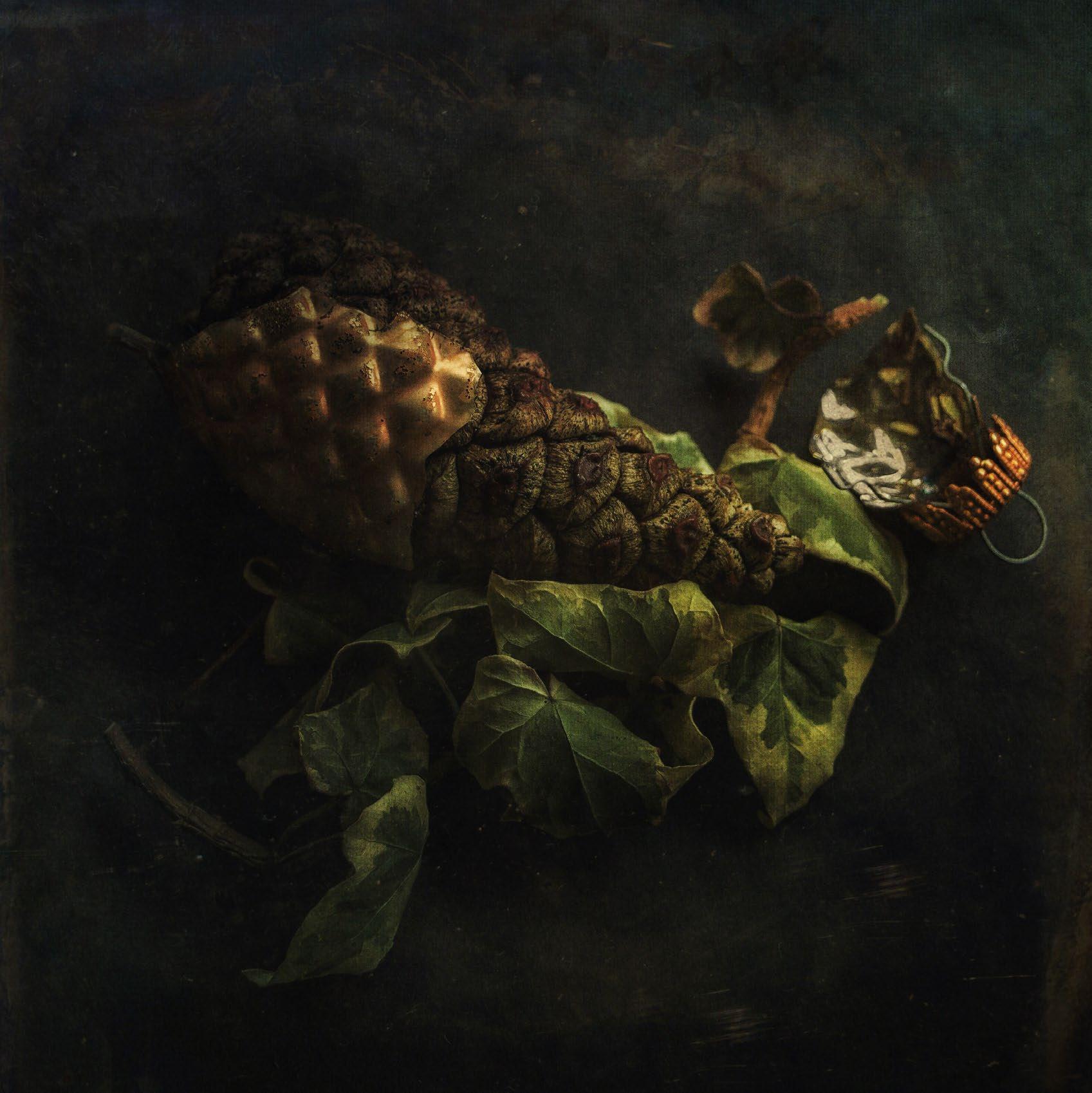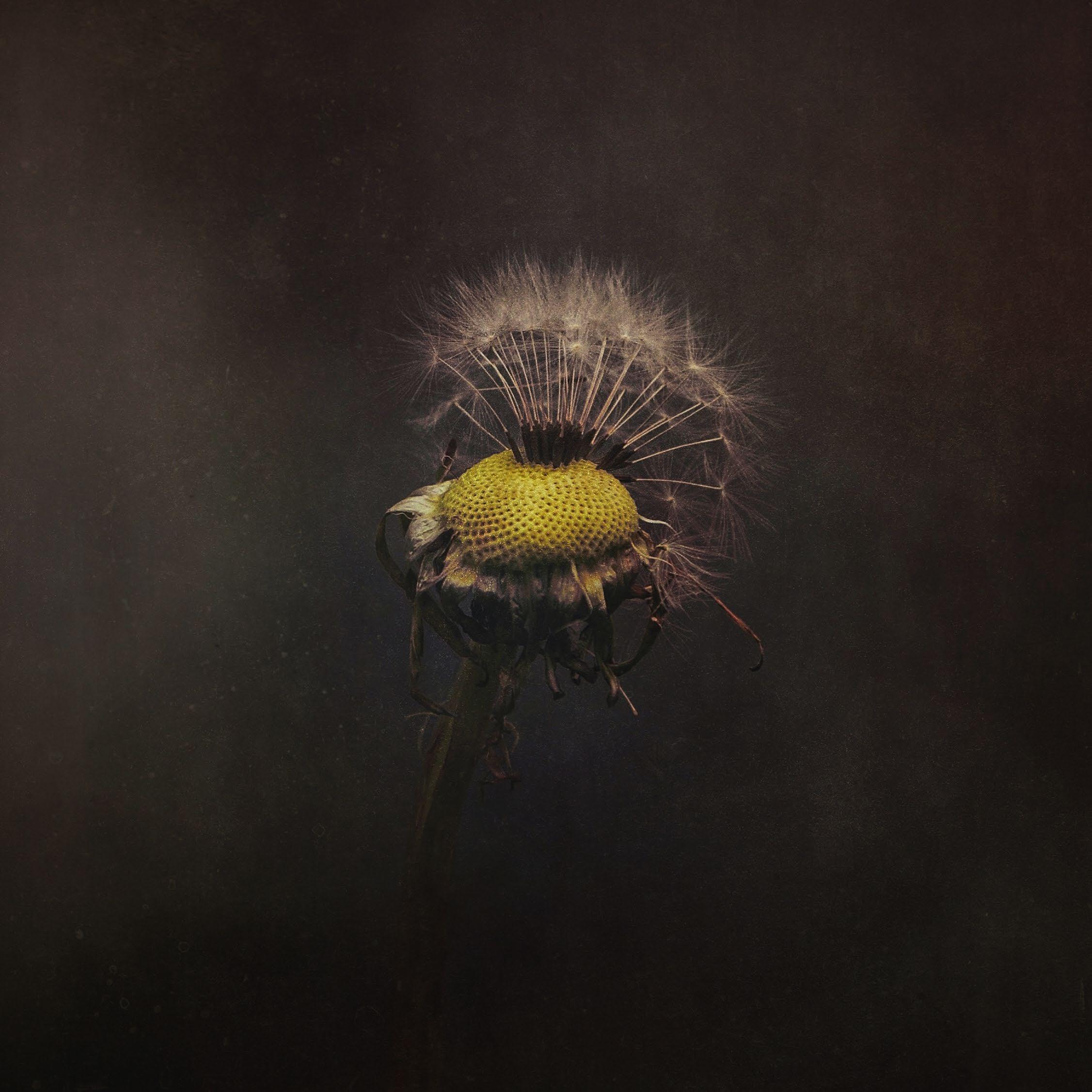
5 minute read
SALLY MILLS
BY JCLYNTRUSS
All But Abandoned
@daisyjack007 / @ w_wanderings / @ f_flyte

“We never looked through a window without gazing at the sky and discussing how many different greys were present in the clouds...” Sally Mills is a self-proclaimed doodler and hoarder—but we call her a masterful raiser of the dead. “My art, as you put it, is purely doodling - playing with light, colour, texture and apps! One day I might even learn how to use my camera properly!” she laughs. Residing in the small town of Chorley in Lancashire, England, Mills recently had to purchase a ten drawer cabinet to store her ever increasing collection of decay. “My first love was dead buildings but when the weather was poor or time prohibitive I started shooting dying flowers. In both, the subtleties of colour and texture fascinate me, and the way light defines them can be mouthwatering,” she explains. We connected with Mills to speak to her about her unique craft, her artfilled beginning and to see what draws us so deeply to things that seem to have the life seeped out of them.

Where did your path to photography begin? I was brought up surrounded by art in various forms - my grandfather was an amateur photographer who took and developed the most amazing images, recording the time he spent in India and East Africa during the 1930 and 1940’s, and my mother was a specialist art teacher, whose passion for her craft stretched from theatre design to fine art painting. As a child, I wasn’t conscious of their influence, but looking back, their enthusiasm for observing and interpreting, artistically, the world around them and, in particular, my mother’s love of light and colour, was indeed infectious. We never looked through a window without gazing at the sky and discussing how many different greys were present in the clouds (we get a lot of grey clouds over Chorley!), or walked under trees without stopping to watch the movement of light. All of that said, how it brought me to photography, I know not! I dabbled with art at school but was employed in the public sector, so did very little hands-on work until I purchased my first iPhone; this I used to take pictures whilst out walking with Edward (my 98-year-old Jack Russell Terrier), of my surroundings. My first camera was provided by my goddaughter on permanent loan, a Nikon which I am ashamed to say I still do not know how to use properly. But truly it was Snowdrop Cottage that really caught my imagination.
Tell us more about the Snowdrop Cottage and why it inspired your current style of photography? Snowdrop Cottage was a tiny cottage in the village where I grew up, and for as long as I can remember it looked rundown, but in later years appeared completely dilapidated and abandoned. Then one day, I saw it was surrounded by temporary fencing and bins so I went over to have a look. The builders on site explained that the cottage had been inhabited by the same owner for over 60 years, but had been condemned on health and safety grounds, and was to be demolished. Before the owner happily moved into a new home, they had become more infirm and had withdrawn into living in just one room, so until the builders had gained access, no one had been upstairs since the 1970’s. I was allowed to go in and in this tiny, tiny dilapidated place my love of empty and abandoned places began. I went back several times recording the last days right up to her last.

There is something about the abandoned and decayed that fascinates people, why do you think that is? It’s difficult to describe why or what it is that fascinates us about empty places. There’s the obvious curiosity of seeing someone else’s life (I can never decide whether that’s healthy or not), and the sense of attachment to a time long gone.There is an enchantment with the beauty of things old, but also the changes that decay creates; light through a broken dirty window is refracted and diffused very differently, and the textures, tones and colours of peeling paint are absolutely palatable! It is the same fascination that attracts me to dying flora, the changes in structure and the mellowing of colour.
Where do all of your flora subjects come from and do you arrange flowers as they are drying to achieve a particular look? I collect things when I’m out walking or from my garden, and sometimes I buy bunches of flowers. All are left to dry naturally and I photograph them as they change in shape, colour and texture. Though this does present a natural hoarder like me with problems; because their change is ongoing, I struggle to throw them away. I don’t choose anything with particular forethought, much preferring the element of surprise that comes with the drying process, nor do I pose bunches of flowers as they dry (though I will sometimes remove a genre from a vase to create a different picture), as ultimately, Mother Nature knows what she’s doing and is so much better at it than me!
What camera(s) do you use? I have just purchased a Canon 760D and a macro 100mm 2.8L IS lens, and am still coming to grips with the change. I am very much a kinetic learner and need to spend time out there doing, ideally with supervisory support rather than trying to understand manuals! I still also, when caught without my camera, use my phone.


YEAR ONE INSPADES ART BOOK ONE YEAR of inspiration, collecting the best artists, creative thinkers, visionary minds that will blow your mind! Hardcover, luxury print on proline pearl paper, a must-have exclusive piece in your collection only at https://www.blurb.ca/user/INSPADES

